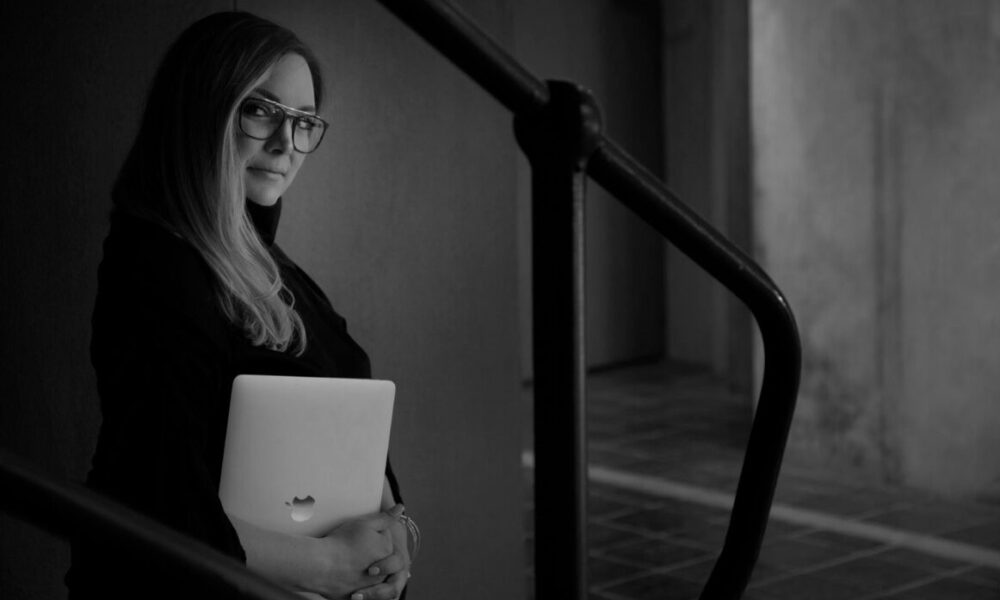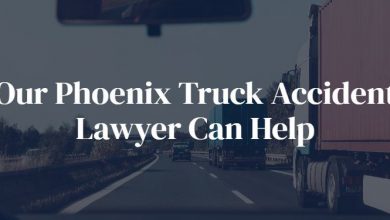Interview with Inge Von Aulock, Founder & COO, Penfriend

This is an interview with Inge Von Aulock, Founder & COO, Penfriend.
Inge, can you tell us a bit about yourself and your journey to becoming an expert in the SaaS industry?
Let me tell you how I actually got into the SaaS space – it came from experiencing a real problem firsthand. While managing billion-dollar revenue at Tesla, I learned a lot about scaling operations and solving critical problems with limited resources. But my journey to SaaS really started when I experienced the pain of managing content operations and writers for my own projects.
I had spent a lot of money on content for websites, and the process was extremely painful – managing content operations, writers, quality, and all the back-and-forth. I just thought there had to be a better way. That’s what led me to co-found Penfriend, where as COO we’re developing AI-powered solutions for B2B SaaS companies with high content standards. I also lead Top Apps, an AI tool directory, because I saw how difficult it was for people to navigate the rapidly evolving AI landscape.
The biggest lesson I’ve learned is that successful ventures come from truly understanding and solving real problems you’ve experienced. It’s not about being an industry expert from day one – it’s about identifying pain points and being creative about solving them.
What were some of the pivotal moments in your career that solidified your expertise in SaaS?
My SaaS expertise wasn’t built in a straight line – it came through unexpected turns and “aha” moments that completely shifted my perspective on technology and business.
The first major pivot came during my time at Tesla. Even though we had 70,000 employees, the company operated like a startup where resources were incredibly tight. This forced me to become exceptionally creative in solving complex problems daily. Managing billion-dollar revenue recognition while leading large teams taught me the foundation of what makes scalable technology work – systems that can grow without breaking. This experience gave me an intimate understanding of how enterprise SaaS needs to function to support rapid growth while maintaining reliability.
The second pivotal moment was deeply personal. I had invested significant money in content for my website, and the entire process was excruciating. Managing content operations, coordinating writers, ensuring quality, and dealing with endless back-and-forth made me think, “There has to be a better way.” This pain point became the seed for what would eventually grow into Penfriend. I realized that content creation was a universal challenge, especially for B2B SaaS companies with high standards but limited resources.
The third transformative moment came when we began developing AI solutions for content creation. We discovered that effective AI content required a much deeper, more involved process than what everyone else was doing. This revelation was especially important for B2B SaaS companies where heads of content maintain exceptionally high standards. We saw that small content teams were “getting absolutely destroyed” when trying to rank well in Google because they couldn’t create enough content to achieve topical authority while juggling their many other responsibilities.
What solidified my expertise was seeing how our solution transformed these businesses. When we implemented our AI content strategy, these companies could suddenly compete with larger players, achieving the content volume and quality necessary for search visibility without expanding their teams or budgets.
These experiences taught me that the best SaaS solutions come from deeply understanding a specific pain point and creating something that feels almost magical in how it solves that problem. It’s not just about the technology – it’s about truly transforming how people work.
Thinking back to your early days in SaaS, what was one of the biggest challenges you faced, and how did you overcome it?
My biggest challenge was being a non-technical founder trying to build a technical product. When I first envisioned Penfriend as a solution to the content creation nightmare I’d experienced firsthand, I had the vision and understood the problem intimately – but translating that into actual working software felt like speaking a language I hadn’t learned yet.
I overcame this by focusing on what I did know – the pain points of content creation and the exact solution users needed. Instead of trying to become technical overnight, I leveraged my strength in clearly articulating the problem and desired outcome. I found technical partners who complemented my skills and created a collaborative environment where my user insights were valued as much as coding expertise. This taught me that in SaaS, understanding the problem deeply is often more valuable than knowing how to code the solution. As we developed our AI-content process, I discovered my non-technical perspective was actually an advantage – it kept us focused on solving real user problems rather than getting lost in technical capabilities that wouldn’t actually move the needle for our customers.
Building a successful SaaS product often involves understanding customer needs deeply. Can you share an experience where you identified a critical customer pain point and how you addressed it within your SaaS solution?
At Penfriend, our biggest breakthrough came when we realized content teams were drowning in complexity – not just from traditional content creation, but from the new wave of AI tools that required them to essentially become prompt engineers overnight. During customer interviews, I watched content managers struggle with complex AI interfaces, spending precious time crafting elaborate prompts instead of focusing on strategy. One client literally said, “I didn’t sign up to learn a new technical skill just to write a blog post!”
This insight led us to develop our “3-click solution” – stripping away all the technical complexity of AI content generation while maintaining the quality B2B companies demanded. We built intuitive templates and pre-engineered prompts behind the scenes so users could simply select their content type, input basic information, and click generate. The results were transformative. Teams that previously spent hours wrestling with AI prompts could now produce high-quality, SEO-optimized content in minutes. One client told me they increased their content output by 400% without adding headcount or compromising on their standards. By addressing this specific pain point – the need for simplicity without sacrificing quality – we turned what was a technological barrier into a competitive advantage for our users.
The SaaS landscape is constantly evolving. What do you think is the most important trend shaping the future of SaaS, and how are you adapting to it?
The most transformative trend in SaaS right now isn’t just AI – it’s the fundamental shift from tools that merely assist humans to tools that actively collaborate with us. This goes far beyond the buzzword bingo we’re all tired of hearing!
What we’re witnessing is a complete reimagining of software’s role. Traditional SaaS products were essentially digital versions of manual processes – they made things faster but still required significant human input at every step. Today’s AI-powered SaaS solutions are actually thinking alongside us, anticipating needs, generating content, and making decisions that previously required human judgment.
At Penfriend, we recognized early that answer engine optimization would become just as important as search engine optimization. This insight fundamentally changed our approach. When I speak with SaaS founders still building for traditional search algorithms, I remind them that users are increasingly getting answers directly from AI interfaces rather than clicking through to websites. The companies that understand this shift are the ones that will thrive.
The most exciting aspect is how this trend democratizes capabilities that were once reserved for enterprises with massive resources. A small marketing team with the right AI tools can now produce content at a scale that previously required dozens of writers. A startup can deliver customer service experiences that rival those of companies with hundreds of support agents.
We’re adapting by focusing on making AI accessible without requiring technical expertise. Our “3-click solution” approach isn’t just about convenience – it’s about removing the barrier between powerful AI capabilities and the everyday users who need them. The winning formula isn’t having the most advanced AI; it’s creating the most intuitive bridge between that technology and the humans who use it.
The SaaS companies that will lead in this new era won’t be those with the most features or even the most advanced algorithms – they’ll be the ones that most seamlessly blend human creativity with AI capabilities, amplifying what makes us uniquely human while automating everything else.
Pricing is a crucial aspect of any SaaS business. What advice would you give to SaaS founders who are struggling to find the right pricing strategy for their product?
Finding the right pricing strategy for a SaaS product is less about mathematical formulas and more about deeply understanding the value you deliver. I’ve learned this firsthand at Penfriend – when we initially priced our AI content solution based on “market standards,” we struggled with conversions. Everything changed when we started pricing based on the actual pain we were eliminating and the time we were saving our customers.
My advice is to first quantify the tangible value your product creates, like time saved, revenue increased, or costs reduced. For us, we discovered our tool was saving content teams 15+ hours per week – that’s worth thousands of dollars monthly to most businesses. Second, test different pricing tiers with real customers before full rollout. We used a simple approach I call “pricing validation” where we presented three different pricing options to 30 potential customers and tracked which one generated the most interest and least resistance. Finally, don’t be afraid to charge more than feels comfortable if your product truly delivers exceptional value. Most SaaS founders dramatically undervalue their solutions, especially when they’re solving significant pain points. A higher price point often positions you as a premium solution and attracts more committed customers who will actually implement your product rather than abandoning it after a month.
Customer success is paramount in the SaaS world. Can you share a customer success story that you’re particularly proud of, and what lessons did you learn from it?
One customer success story that still makes me smile happened with a B2B software company. When they first came to us, they were the classic example of a technically brilliant product with virtually zero market visibility. Their content marketing consisted of sporadic blog posts whenever their CTO “had time” – which, predictably, was almost never.
Their head of marketing was incredibly frustrated. She knew content was critical for their growth, but with a team of just two people handling everything from email campaigns to trade shows, comprehensive content creation was impossible. Their blog was buried on page seven of Google results, and their domain authority was so low that even their best content wasn’t getting traction.
What made this partnership special was their openness about their limitations. “We build security software, not content,” she told me in our first meeting. “Our engineers speak in code and technical specifications. We need help translating that expertise into content that actual humans want to read.”
We implemented our 3-click AI content solution, but with a twist tailored to their situation. We created a simple intake form where their technical experts could dump their knowledge in bullet points – no writing skills required. Our system would then transform these raw insights into comprehensive, SEO-optimized articles, case studies, and whitepapers within minutes. Their team could then quickly review and approve with minimal time investment.
The results were transformative. Within four months:
- Their content production went from 2-3 pieces monthly to 20+
- Organic traffic increased by 340%
- They ranked on page one for 17 of their target keywords (up from zero)
- They generated 5x more qualified leads from content
- Their sales team reported prospects mentioning articles they’d read, showing the content was actually being consumed
But the most meaningful metric came six months in, when their head of marketing called me, almost in tears: “We just closed a $180,000 deal that came entirely through someone reading our content. They said they chose us over a competitor because our articles showed we really understood their problems.”
The biggest lesson this taught me wasn’t about content or AI – it was about understanding where your customers’ true expertise lies and not forcing them to become experts in areas outside their core strengths.
Many aspiring SaaS entrepreneurs look up to industry veterans like yourself. What is one piece of advice you wish someone had given you when you were first starting out?
If I could go back and whisper one piece of advice to my younger self when I was just starting out in SaaS, it would be this: “Validate faster, iterate sooner, and don’t try to build the perfect product on day one.”
When I first conceived Penfriend, I fell into the classic trap that ensnares so many first-time SaaS founders. I spent months refining our concept, building comprehensive feature sets, and polishing the UI before putting it in front of actual customers. I was terrified of launching something “incomplete” or below the high standards I had set.
This perfectionism cost us precious time and resources. We built features that customers never used and perfected aspects of the product that weren’t actually critical to solving the core pain point. I later discovered that the functionality I’d spent weeks refining could have been validated with a simple landing page and a manual process behind the scenes.
What transformed our trajectory was when we finally embraced the “launch to learn” mentality. We stripped our product down to its essential component—making AI content creation dead simple for non-technical users—and put that minimal viable solution in front of real customers. The feedback we received in those first few weeks was more valuable than all the internal brainstorming we’d done for months.
Now, when I launch anything new, I follow what I call the “three-month rule”: I give myself 90 days to validate whether an idea has traction. Put some content up, build a few backlinks, and see what happens. The metrics are straightforward: How much traffic is the site getting? How many keywords are we ranking for? Can we convert any of that traffic? These KPIs tell me whether to further invest or move on to the next opportunity.
The SaaS landscape is littered with beautifully designed, feature-rich products that nobody actually wanted. Don’t be one of them. Your first version doesn’t need to be perfect—it just needs to solve a real problem well enough that people are willing to pay for it, even with its limitations.
Speed over accuracy. Moving fast is really, really important in SaaS. You can always refine your product later, but you can never get back the time spent building features nobody asked for.
Looking ahead, what are you most excited about in the future of SaaS, and what role do you see yourself playing in it?
The future of SaaS has me genuinely excited in a way that makes me feel like a kid on Christmas morning. We’re standing at the threshold of what I call the “Great Democratization” – a fundamental shift where sophisticated capabilities once reserved for tech giants and enterprise companies are becoming accessible to everyone.
What thrills me most is watching the barriers to entry crumble across every industry. The next wave of SaaS isn’t just about making existing workflows more efficient; it’s about completely reimagining what’s possible for small teams and individual creators. The pattern I’m seeing emerge is powerful: specialized AI combined with intuitive interfaces is creating “superpowers on demand” that require zero technical expertise.
Take what we’re seeing with AI in content creation – it’s just the beginning. Soon, we’ll have SaaS platforms that enable a single entrepreneur to launch and operate businesses that would have required 20+ employees just five years ago. I’m watching closely as vertical-specific AI tools are transforming industries from legal services to healthcare to education, following the same pattern we pioneered in content.
The most fascinating shift is what I call the “expertise inversion.” Traditionally, software required users to adapt to its logic and workflows. The next generation of SaaS is different – it adapts to how humans naturally think and work. This means domain experts can immediately apply their specialized knowledge without first becoming software experts. A doctor can use medical AI without understanding machine learning. A designer can create complex animations without coding. A writer can optimize for search without becoming an SEO specialist.
I believe we’re moving toward what I call “invisible SaaS” – where the technology becomes so seamlessly integrated into workflows that users barely perceive they’re using software at all. The interface fades away, and people simply accomplish what they need with unprecedented speed and quality.
Perhaps most exciting to me is how this democratization of technology is creating unprecedented wealth-distribution opportunities. When specialized knowledge becomes accessible through SaaS, it creates new economic possibilities for people previously excluded from certain industries.
Thanks for sharing your knowledge and expertise. Is there anything else you’d like to add?
If there’s one final thought I’d leave you with, it’s this: The most successful SaaS products aren’t built by the most technical founders or the ones with the biggest budgets – they’re built by the people who are most intimately familiar with the problem they’re solving.
When I left the corporate world to build Penfriend, I didn’t have coding skills or venture capital – I just had firsthand experience with how painful content creation was and a burning desire to fix it. That authentic connection to the problem is worth more than any technical skill. So if you’re hesitating to enter the SaaS space because you don’t fit the traditional “tech founder” mold, take that as your superpower, not your limitation. The future belongs to founders who deeply understand their customers’ struggles and build solutions that feel like magic – regardless of their technical background. Remember, the best SaaS isn’t about the sophistication of your code; it’s about the simplicity of the solution you provide to a real human problem.



